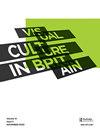Queer Juxtapositions in the Art of Francis Bacon and Lilliput Magazine
Q2 Arts and Humanities
引用次数: 1
Abstract
Francis Bacon made extensive use of photographs and other images from the visual culture of his time in the production of works that were implicitly queer. Homosexual men were widely represented in prose and through cartoons as camply effeminate ‘pansies’. In the magazine Lilliput, by contrast, photographic spreads produced juxtapositions that evoked a range of responses to same-sex attraction from erotic engagement to nervous rejection. Studying the ways in which this and other magazines engaged with queer culture enables us to reassess the painter’s use of juxtaposed visual forms as acts of sexualized self-expression.弗朗西斯·培根与《利力浦特》杂志艺术中的异类并列
弗朗西斯·培根在创作含蓄酷儿的作品时,广泛使用了他那个时代视觉文化中的照片和其他图像。在散文和漫画中,男同性恋者被广泛地描绘成柔弱的“三色堇”。相比之下,在《小人国》杂志上,照片的传播引发了人们对同性吸引的一系列反应,从情爱的订婚到紧张的拒绝。研究这本杂志和其他杂志参与酷儿文化的方式,使我们能够重新评估画家将并列的视觉形式作为性化自我表达的行为。
本文章由计算机程序翻译,如有差异,请以英文原文为准。
求助全文
约1分钟内获得全文
求助全文
来源期刊

Visual Culture in Britain
Arts and Humanities-Visual Arts and Performing Arts
CiteScore
0.60
自引率
0.00%
发文量
1
 求助内容:
求助内容: 应助结果提醒方式:
应助结果提醒方式:


